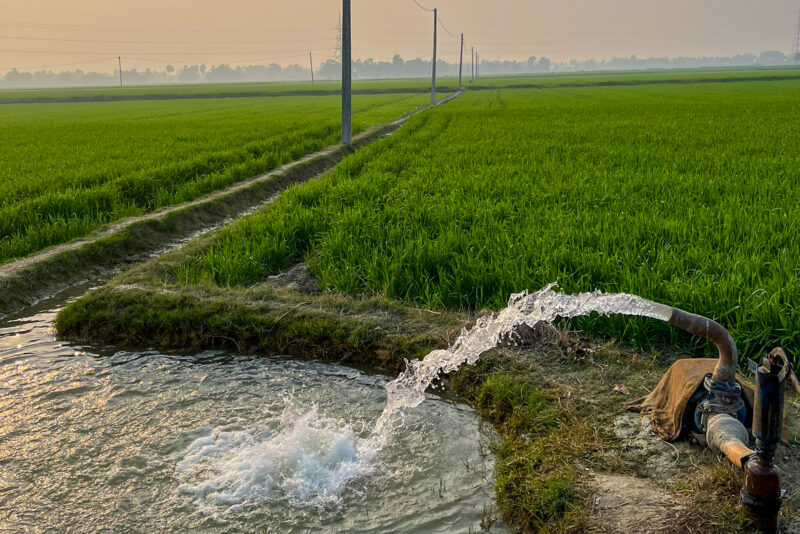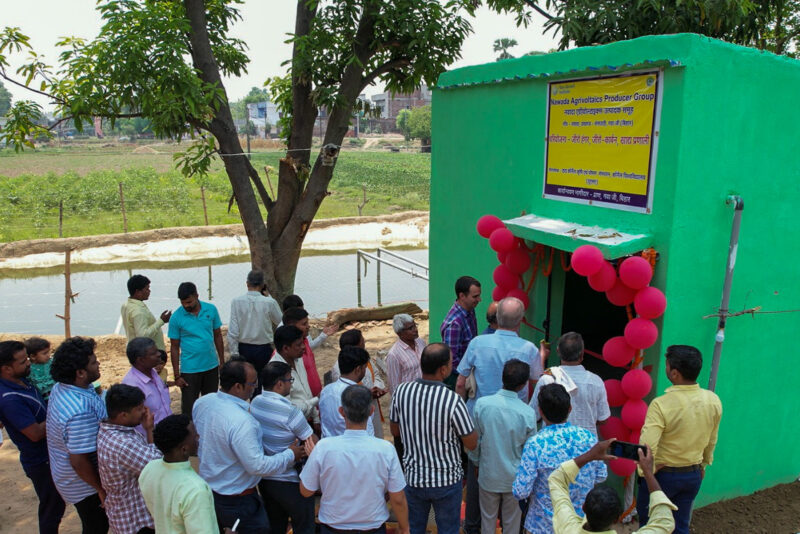Key Takeaways from TCI’s Report on Food, Agriculture, and Nutrition in South Asia
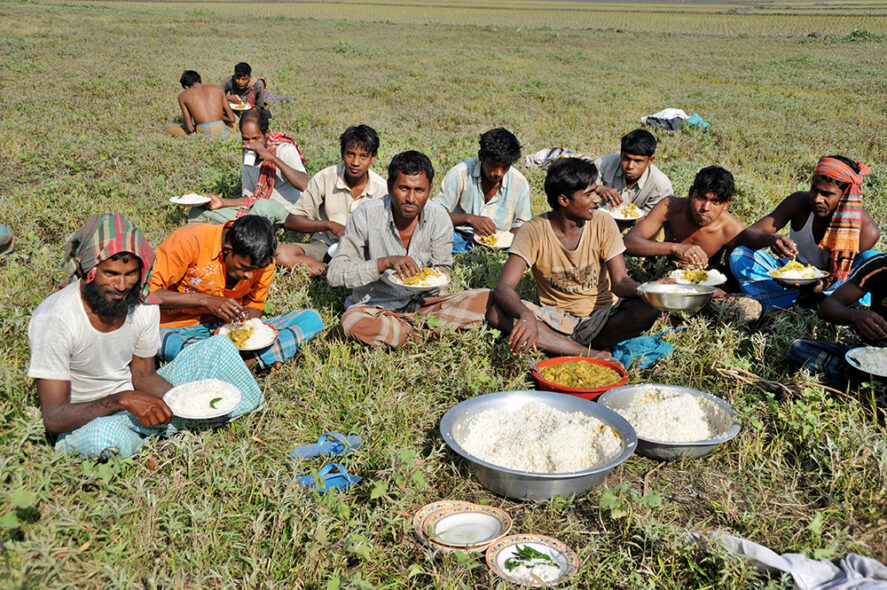
Late last year, TCI published a report examining the state of food systems in South Asia. Part of a series produced by the Institute, Food, Agriculture, and Nutrition in South Asia: Building Healthy, Sustainable Food Systems (FAN-South Asia) explores trends in agricultural production, nutrition, and food consumption across the region, offering a range of policy prescriptions to tackle malnutrition and asking pertinent questions about the future of the region’s food systems.
In this blog post, we present key trends in food, agriculture, and nutrition in South Asia and the policymaking approach necessary to overcome the region’s challenges.
The triple burden of malnutrition
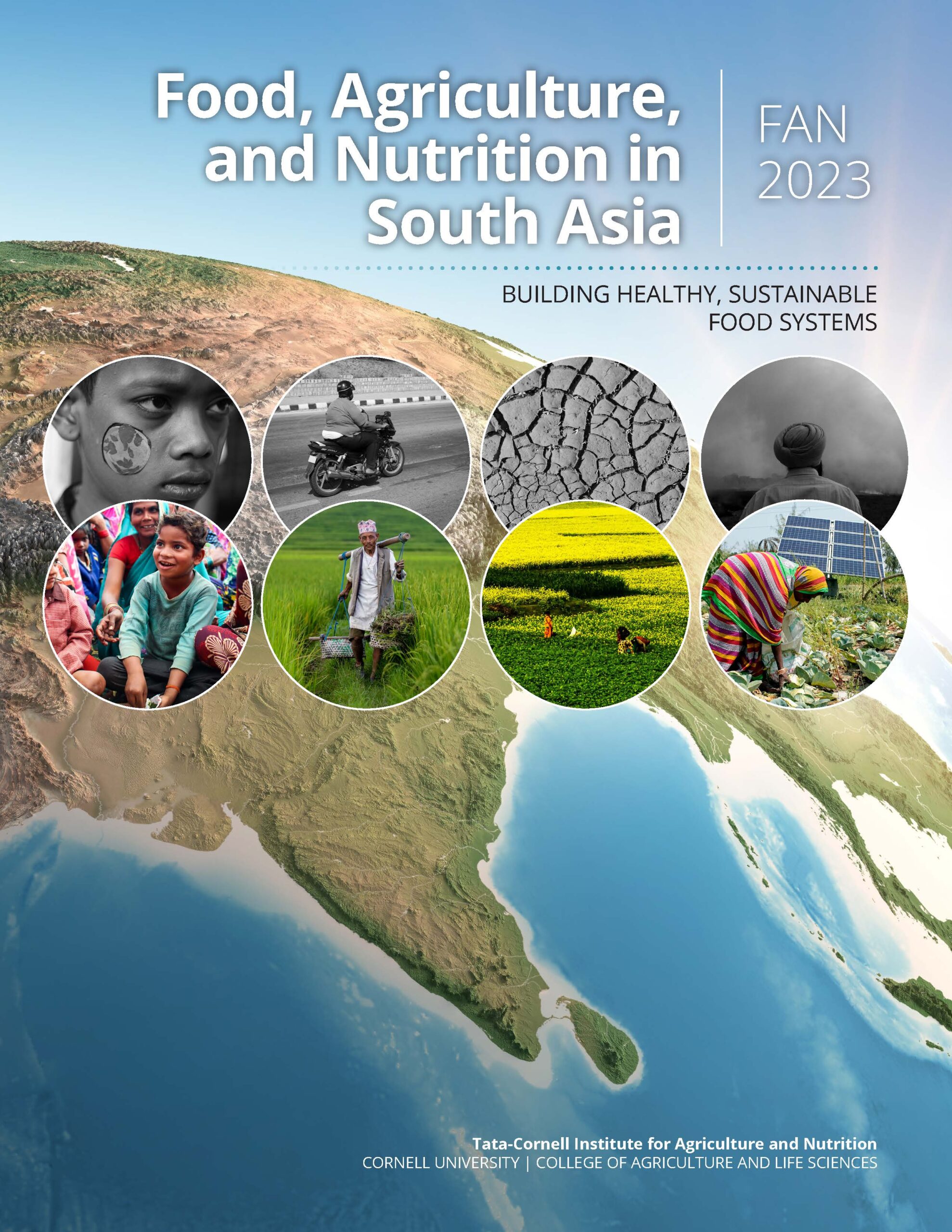
The FAN-South Asia report is available for download in PDF format.
Beginning in 2018, South Asia as a region seems to have undergone a rise in the prevalence of undernourishment after more than a decade-long period of improvement. This suggests that recent global events, such as the COVID-19 pandemic and the conflict in Ukraine, alone or in combination with local events, such as floods in Pakistan, an economic crisis in Sri Lanka, and political instability in Afghanistan, were too big of shocks for the region to absorb. Furthermore, while recent data on overweight and obesity in South Asia is scarce, the period 2001-2017 exhibits a linear upward trend in literally all countries in the region. Finally, progress in tackling micronutrient deficiency—most notably anemia among children and women—has recently either stalled or even digressed.
While the region in the past focused most of the resources and efforts to address only one dimension of malnutrition—undernourishment—it seems that in the future it will need to address all three dimensions: undernourishment, obesity, and micronutrient deficiency. But if South Asia could not fully address even one dimension in the past, the key question is how it can be capable of addressing all three dimensions in the future.
Determinants of malnutrition
There are numerous causes of malnutrition. Some are proximate and obvious, such as high food prices, low or high supply of certain food products, proximity to market, etc. Other reasons are less obvious, like social injustice and inequality.
Policy instruments created to tackle the first group of issues have had limited success, as they were often short-lived and economically unsustainable. As for the second group of issues, South Asian countries, but also almost all other countries in the world, have made barely any progress. Policy responses to those issues are still relatively new and in the early stage of implementation. One might wonder how South Asia, if it could not fully address even the proximate causes of malnutrition in the past, will be able to address the much more complex challenges of social injustice and inequality.
The role of agriculture in tackling malnutrition
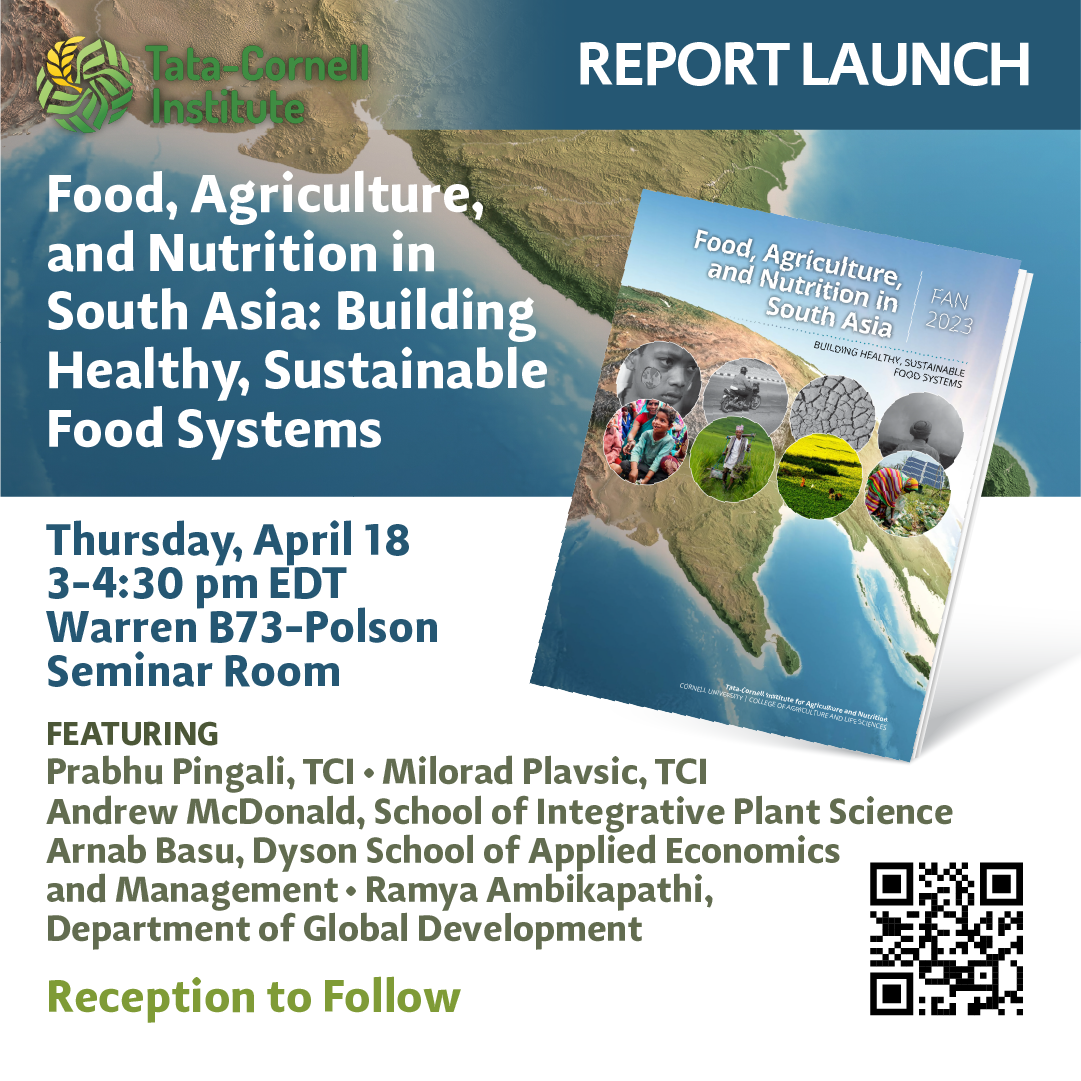
A panel of experts from Cornell University will explore the trends and challenges facing South Asian food systems at a special event launching the FAN-South Asia report on April 18 at 3 p.m. EDT in Warren Hall B73 and on Zoom.
Except for Maldives and, to some extent, Sri Lanka, agriculture in South Asia has a relatively high influence on national economies. The share of employment in agriculture varies between 35% in Pakistan and 65% in Nepal, with other countries falling somewhere between the two. The share of agricultural GDP is between 12% and 22%. Additionally, labor productivity is relatively low and total factor productivity had relatively modest or even negative growth between 2001 and 2014.
To tackle malnutrition among the agricultural population, either through own-production or through the income pathway, agriculture will need to generate more value per worker. In the past, this would be addressed by agricultural intensification, primarily through higher input use. In present times, and in the future, this is unworkable because of the adverse effects on natural resources and changes in climate patterns that agriculture can cause, which in turn negatively affect agricultural production, creating a vicious circle. Future interventions must be win-win, both for agricultural production and for the environment. Luckily, there is a catalog of those interventions, while new ones will inevitably emerge.
Policy solutions
To tackle the challenges described above, a new policymaking approach is needed. While policies have traditionally targeted one issue, new policies will need to target several, which will very likely be under the control of different governmental departments. Avoiding negative externalities and unintended consequences will be the first step in the process. To that end, robust ex-ante analysis must be a precondition for any policy instrument under consideration. Having said that, robust analysis is not realistic without proven methodology and accurate and timely data.
Policy instruments will need to be genuinely context-specific, and the context will be determined by geographic location, agroclimatic zones, farm size, agricultural management practices, breeds, and the species of animals in target regions, as well as the culture, age, and gender of the target population. The success of some policy instruments will be subject to expected changes in circumstances, such as the development of better road and irrigation infrastructure, the establishment of cold chains, improved market linkages, aggregation of agricultural production, improved knowledge of producers, etc.
South Asia is very diverse but holds many similarities, too. Every opportunity to replicate a policy instrument in the original or adjusted form must be taken, for two main reasons: saving both time and money.
New policy instruments will require significant improvements in institutional infrastructure and human capital across South Asia. They will also require a clear delineation of policy and politics and an alignment of short- and long-term goals. They will need to be driven by credible data and science, instead of narrow, interest-based motives. It is difficult to predict if and when those preconditions will be met, but identifying the preconditions is a step in the right direction.
In our FAN-South Asia report, we present a list of policy prescriptions organized by their place on the supply chain and provide examples of how different parts of food systems are connected and may impact one another, providing a conceptual model for policymakers.
The FAN-South Asia report is available for download in PDF format.
Milorad (Misha) Plavsic is TCI’s manager for strategic initiatives. He is the lead author of Food, Agriculture, and Nutrition in South Asia: Building Healthy, Sustainable Food Systems.
Featured image: A group of agricultural workers shares a meal in Dhaka, Bangladesh. (Photo by Sk Hasan Ali/Shutterstock)




